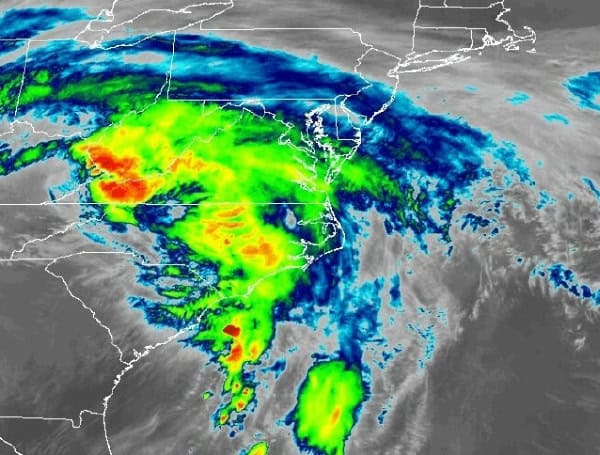Hurricane Helene, now located over the southern Appalachians, is causing widespread devastation across the southeastern US. The storm is unleashing torrential rainfall and strong winds, leading to historic and life-threatening flooding.
Coastal areas, particularly along South Carolina, are experiencing heavy rain and gusty winds. Meanwhile, portions of northeastern Georgia and the western Carolinas, especially in higher elevations, are being battered by wind gusts near hurricane force.
Read: Hurricane Helene Weakens To Tropical Storm After Florida Landfall
The primary concern remains the relentless rainfall over the Southeast, resulting in catastrophic flooding.
Helene’s movement is expected to slow down later today, leading to a near-stall over the Tennessee Valley tonight and into the weekend.
This stalling, coupled with a merger with an upper-level low, will prolong the heavy rainfall and increase the risk of severe flooding in the Ohio and Tennessee Valleys, and the southern Appalachians. The storm is also expected to transition into an extratropical cyclone later today.
Read: Flooding Impacts Wastewater Systems In Apollo Beach And Ruskin
The National Hurricane Center emphasizes the severity of the situation with three key messages:
- The Southern Appalachians face a continued threat of historic, catastrophic, and life-threatening flash and urban flooding, including landslides, through this evening. Widespread significant river flooding is already ongoing, with some areas potentially experiencing major to record-breaking levels.
- Damaging wind gusts will persist over portions of Georgia, the Carolinas, Tennessee, and Kentucky today, particularly in the higher terrain of the southern Appalachians.
- Long-duration power outages are possible in parts of the southeast U.S. If you use a generator after the storm, ensure it is placed outside at least 20 feet away from doors, windows, and garages to avoid deadly carbon monoxide poisoning.
Residents in affected areas are urged to stay vigilant, heed warnings and advisories from local officials, and take all necessary precautions to ensure their safety. The situation remains critical, and the threat of flooding and other hazards persists.
Please make a small donation to the Tampa Free Press to help sustain independent journalism. Your contribution enables us to continue delivering high-quality, local, and national news coverage.
Android Users: Download our free app to stay up-to-date on the latest news.
Connect with us: Follow the Tampa Free Press on Facebook and Twitter for breaking news and updates.
Sign up: Subscribe to our free newsletter for a curated selection of top stories delivered straight to your inbox.


